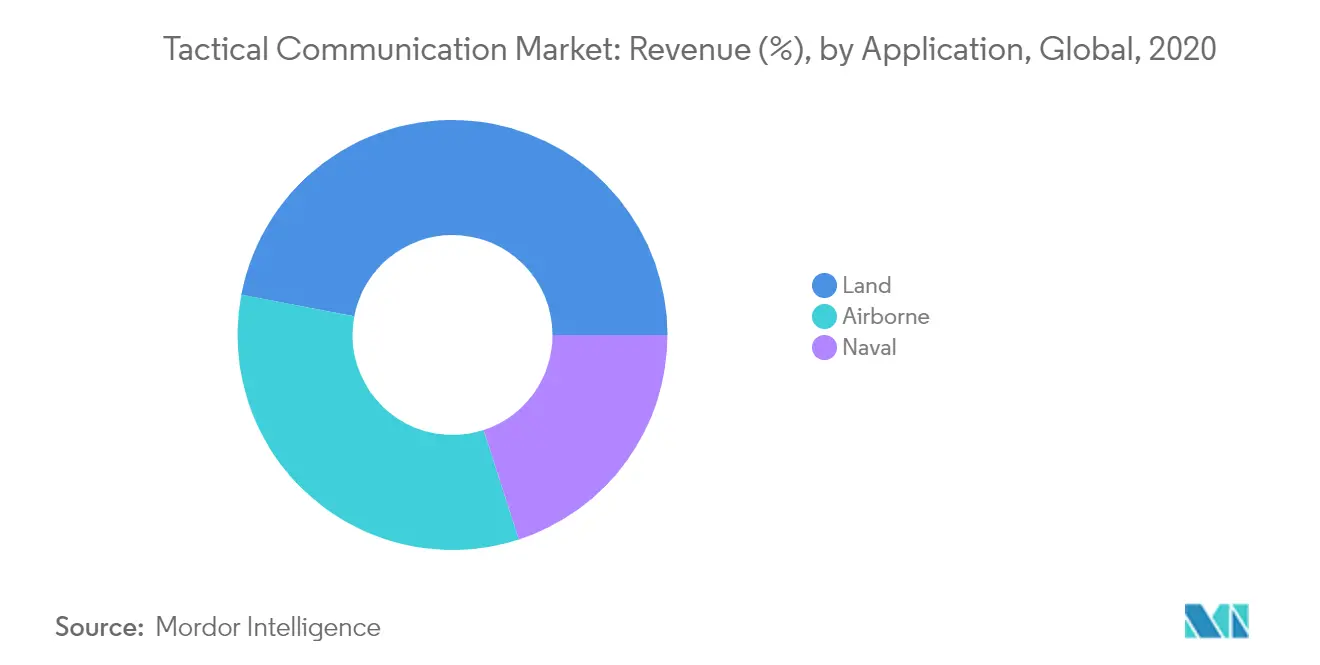Market Trends of Tactical Communication Industry
This section covers the major market trends shaping the Tactical Communication Market according to our research experts:
The Land Segment Held the Largest Market Share in 2020
Militaries across the world are strengthening their land-based mission capabilities as land-based forces are the largest in terms of personnel strength and operate the highest number of vehicles. Land-based communication systems are becoming increasingly sophisticated, allowing ground-based forces to leverage advanced wireless technology and smartphones while actively moving in ground vehicles or as dismounted infantry. The growing demand for secure communication for land-based forces on the move has given rise to communication solutions in a smaller form factor that enhances mobility like the manpack radios. For instance, in April 2021, L3Harris Technologies announced that its Falcon III AN/PRC-117G manpack radios were selected by the German Ministry of Defence for the German Army. There is also a growing demand for SATCOM-on-the-move solutions allowing soldiers to maintain communications in any situation while their vehicle is moving. In June 2020, Airbus unveiled a land-based communication solution that offers units in operation a secure satellite-based broadband connection with high availability to exchange videos, voice, and operational flows in fast-moving circumstances. The solution, named OTM-T (On-The-Move Terre), is compact, weighs less than 60 kg, and can easily be integrated into any armored vehicle. The French Army is expected to be the prime customer for the solution. The current 5G and future 6G networks are expected to open new frontiers in tactical communication for military forces on the ground as they equip them with better data bandwidth, resulting in better data speed and improved connectivity and reach. These technologies are further expected to bolster the prospects of the segment during the forecast period.

North America is Expected to Generate the Highest Demand During the Forecast Period
North America held the highest market share among all the regions in 2020. The United States is the largest military spender in the world. In 2020, the military expenditure of the country grew by 4.4% to reach USD 778 billion, accounting for 39% of the global military expenditure, according to SIPRI. The country plans to increase its funding for communications, sensors, and electronics by about 20% in real terms over the next two years. The country's Handheld, Manpack, and Small Form Fit (HMS) program, aimed at procuring a family of software reprogrammable radios for tactical voice and data communications, is expected to generate huge demand for Leader and Manpack radios during the forecast period. The current Army acquisition objective includes 100,000 Leader Radios, 65,622 Manpack Radios, 21,579 Rifleman Radios, and 104,496 Single Channel Data Radios. In January 2021, Thales announced that it had been awarded its third delivery order from the US Army to provide the AN/PRC-148D Improved Multiband Inter/Intra Team Radio (IMBITR). This latest award brings the total IMBITR radio orders to more than 6,000. On the other hand, the US Space Force had submitted its first unfunded priorities list in 2020, which includes funding to accelerate several satellite communications programs, missile warning satellites, and the launch of two GPS satellites. The country is working on two strategically important satellite communication programs. The Protected Tactical Satellite Communications (PTS) program is intended to provide jam-resistant, low-probability-of-intercept satellite communications for tactical forces operating in highly contested environments. On the other hand, the Evolved Strategic Satellite Communications (ESS) program is a follow-on to the Advanced Extremely High Frequency (AEHF) program intended to support strategic missions, such as nuclear command and control. Similarly, Canada also has plans to invest significantly in the procurement of portable communication systems in the coming years. Such modernization plans to enhance the capabilities of the armed forces in the region are expected to propel the growth of the market in North America during the forecast period.


